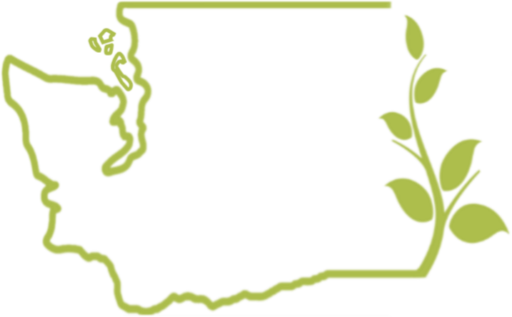Sources of Climate Change Information to help you learn more.
If you joined the group because you wanted to learn more about Climate Change, this section is dedicated to helping you.
We’re developing EMG to EMG educational presentations:

Class for EMGs on Climate Change
Project Lead: Jim Little (King)
Contact – to join group or offer suggestions
In development for release later this year are three modules:
– Climate Challenges
– Climate Solutions
– Effective Communication … most effective ways message to initiate action.
Some videos:
Climate Change ‘Core Concepts’. Created by WSU Prof. Cogger, these 10 short videos give those new to Climate Change a good overview of the topic from a Climate Science perspective.
5th National Climate Change Assessment (NCA5). The latest research on Climate Change, produced by the US Global Change Research Program. Huge volume of material. Key subset to look at:
– Chapter 27, the Northwest (WA, OR, ID)
– Chapter 12, the Built Environment, Urban Systems and Cities
– Western Wildfires
Also, if you prefer videos to reading:
– Webinar Series
Pew Research: How Americans feel about Climate Change. 10.25.2023
Books recommended by EMGs:
Some favorites by members of the team
Listing of recommended readings for those who want to broaden their Climate Change knowledge base.
(Make Recommendation here)
How to Avoid a Climate Disaster
Written by Microsoft founder Bill Gates in 2021 and surprisingly readable, forward looking and generally positive. Gives a good “50,000 foot view” of all that needs to be done to tackle climate change. Across all industries, worldwide. If you are looking for a good overview of what is involved, this is a place to start. Not a ‘doom and gloom’ book, instead he focuses on what needs to happen with a bent towards tech & innovation. Adds important perspective that new technologies must be cost competitive and must be able to scale.
Gates, Bill. How to Avoid a Climate Disaster, Published 2021 by Alfred A. Knopf New York Toronto. ISBN 978-0-385-54613-3
Nature’s Best Hope
Author Douglas W. Tallamy, promotes the idea of homeowners strategically designing their yards to help wildlife populations with ‘conservation corridor’ wildlife habitats. Tallamy is one of the leading thinkers in this area and his ideas are often quoted and influence other works. A little tough to read, sometimes swinging to the negative, but the underlying message is “here are things you can do” to make it better.
Tallmy, Douglas W.. Nature’s Best Hope, Published 2019 by Timber Press Portland, Oregon.
ISBN: 978-1-60469-900-5
Mini-Forest Revolution
In Mini-Forest Revolution, Lewis presents the Miyawaki Method, a unique approach to reforestation devised by Japanese botanist Akira Miyawaki. She explains how tiny forests as small as six parking spaces grow quickly and are much more biodiverse than those planted by conventional methods. She explores the science behind why Miyawaki-style mini-forests work and the myriad environmental benefits, including: cooling urban heat islands, establishing wildlife corridors, building soil health, sequestering carbon, creating pollinator habitats, and more.
Lewis, Hanna. Mini-Forest Revolution, Published by Chelsea Green
https://www.chelseagreen.com/product/mini-forest-revolution/
The Hidden Life of Trees
An illuminating account of the forest, and the science that shows us how trees communicate, feel, and live in social networks.
Wohlleben, Peter. The Hidden Life of Trees, Published by Greystone Books
https://www.peterwohllebenbooks.com/the-hidden-life-of-trees
The Book of Wilding
The Book of Wilding is a handbook for how we can all help restore nature. It is ambitious, visionary and pragmatic. The book has grown out of Isabella and Charlie’s mission to help rewild Britain
Tree, Isabella. The Book of Wilding, Published by Bloomsbury
https://www.bloomsbury.com/us/book-of-wilding-9781526659309/
The Climate Change Garden: Down to Earth Advice for Growing a Resilient Garden
The Climate Change Garden book is full of simple and practical ideas for gardeners to adjusting gardening practices to create productive, low-maintenance, climate-savvy gardens that are resilient to the the current realities of our climate change, and suggestions for practices to reduce one’s carbon footprint.
Sally Morgan & Kim Stoddart (2023)
No Dig
This book provides a wealth of knowledge for vegetable gardeners who are looking for ways to increase the quality and quantity of their gardens, while using the “no dig” approach which reduces the amount of carbon released into the atmosphere and increases the ability of the soil to capture carbon.
Dowding, Charles 2022
Fen, Bog & Swamp: A short history of the peatland destruction and its role in the climate crisis
In this book, the author “makes radically clear that in addition to reducing carbon emissions, we must preserve and restore the wetlands that store those emission and are critical to human survival and the survival of the planet.” (quote is from the book jacket). This book provides fantastic background information for those interested in learning the “why” behind the need to eliminate those gardening practices that contribute to our current climate change crisis.
Proulx, Annie (2022)
